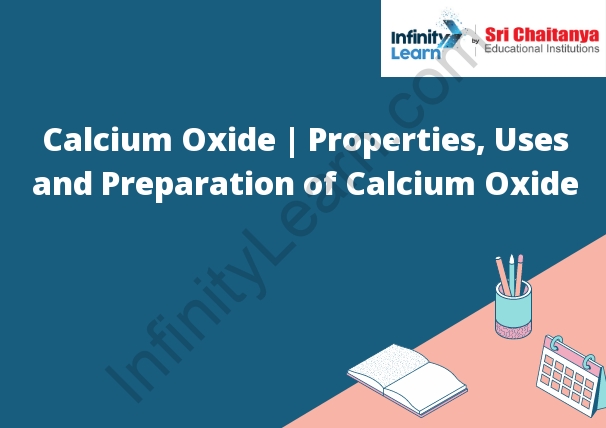Table of Contents
Calcium Oxide and its Properties
Calcium oxide (CaO) is a white solid that is highly soluble in water. It is produced when calcium carbonate (CaCO3) is heated to high temperatures in the presence of a limited amount of air or oxygen. Calcium oxide is an inorganic compound with the chemical formula CaO. It is a white solid that is highly soluble in water. It is produced by the calcination of calcium carbonate or calcium sulfate
Calcium oxide has a number of important applications. It is used as a flux in the production of steel and other alloys. It is also used as a raw material in the manufacture of cement, lime, and other calcium-based products.
Calcium oxide is a basic material that reacts with acids to produce calcium salts and water. For example, when calcium oxide is added to hydrochloric acid (HCl), it reacts to produce calcium chloride (CaCl2) and water.

Benefits Of Calcium In The Human Body
- Calcium is a mineral that is important for the human body to function properly.
- It is found in bones and teeth and is necessary for strong bones and healthy teeth.
- Calcium is also necessary for the proper functioning of the heart, muscles, and nerves.
- It helps to regulate blood pressure and blood sugar levels
- . Calcium can also reduce the risk of developing osteoporosis and other bone diseases.
Interesting Facts about Calcium Oxide
Calcium oxide is a chemical compound with the formula CaO. It is a white solid that is highly soluble in water. Calcium oxide is produced when calcium carbonate is heated above 825 °C:
CaCO 3 → CaO + CO 2
Calcium Oxide Uses
Calcium oxide, commonly known as quicklime or burnt lime, is a versatile chemical compound with various uses across different industries. When writing an article about calcium oxide, it is important to highlight its applications and significance. Here are some key uses of calcium oxide to consider:
- Industrial Applications: Calcium oxide plays a crucial role in many industrial processes. It is extensively used in steel production as a fluxing agent, helping to remove impurities from iron ore during the refining process. Additionally, calcium oxide is utilized in the production of cement, where it acts as a key component in the chemical reaction that converts limestone into the final product.
- Water Treatment: Calcium oxide is employed in water treatment facilities to regulate pH levels. It can neutralize acidic water by reacting with the excess hydrogen ions, thus helping to maintain the water’s alkalinity within an acceptable range. Furthermore, calcium oxide is often utilized in the treatment of wastewater, aiding in the removal of heavy metals and other contaminants.
- Construction and Building Materials: Quicklime finds application in the construction industry due to its binding properties. It is a vital ingredient in mortar and plaster, facilitating the formation of strong bonds between bricks, stones, and other building materials. Calcium oxide-based materials, such as lime putty and lime wash, are also used for surface finishes and protection of historic structures.
- Soil Amendment: Farmers and gardeners utilize calcium oxide as a soil amendment to improve soil quality and fertility. It helps to neutralize acidic soils, raising their pH levels and reducing soil acidity. Additionally, calcium oxide can provide essential calcium nutrients to plants, promoting healthier growth and development.
Calcium Oxide Preparation
- Calcium oxide is an inorganic compound with the chemical formula CaO. It is a white solid that is very soluble in water. It is produced when calcium carbonate is heated to produce lime.
- Calcium oxide is produced when calcium carbonate is heated to produce lime. The calcium carbonate is heated to produce calcium oxide and carbon dioxide.
- The calcium oxide is then mixed with water to produce calcium hydroxide. The calcium hydroxide is then used to produce mortar and concrete.






